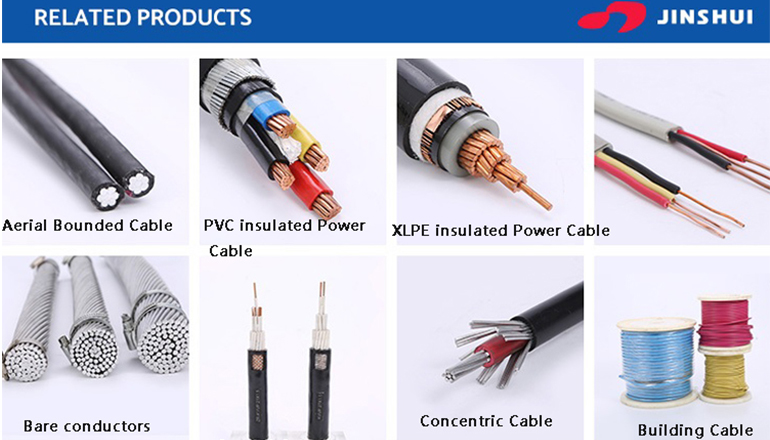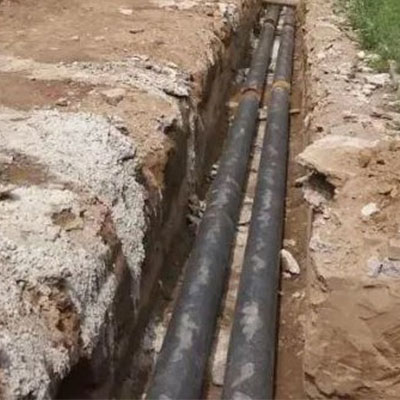- Offices Time:24 Hours Online
- Email:[email protected]
- WhatsApp:+8618339938759

Posted on July 4, 2023
How to prevent power cord leakage?
Generally speaking, the power cable cannot enter water during production, and the inside of the cable is kept dry, and the electric field voltage test must be carried out when the cable leaves the factory. If water enters the low-voltage power cable, it will cause metal corrosion such as steel strips and copper strips, and the insulation performance will decrease. When water penetrates the insulation, it will cause the cable to break down, and it may also cause an explosion and cause a serious accident.
Choose qualified cable products to avoid the risk of water leakage
1. When purchasing cables, you must choose a manufacturer with excellent quality. Since the impurities and pores in the insulation are the starting point of water treeing, the quality of the cable is very important to prevent the aging of water treeing.

2. The cable head should seal the sawn-off cable end. No matter it is stacked or laid, it should be sealed with plastic (using a special sealing sleeve for cables) to prevent moisture from infiltrating.
3. After the wire is laid, the cable head should be made in time.
4. Strengthen the management of the production process of the cable head. Once the cable enters the water, the first breakdown phenomenon is often the cable head, so the wire head is made well, which can prolong the overall life of the cable. For example, when the cable is peeling off the semiconductor layer, draw a few lines vertically on the semiconductor layer, and then peel off the semiconductor like sugarcane peeling. However, when scratching with a knife, if the scratch is too deep, it will damage the insulating layer and bring opportunities for the generation of water trees.
5. Use cold shrinkable cable head. Cold shrink silicone rubber cable accessories, easy to make, no blowtorch, no solder. And the silicone rubber cable accessories are elastic and tightly attached to the cable, which overcomes the shortcomings of heat-shrinkable materials.
6. Use PVC plastic double-wall bellows. The pipe is resistant to corrosion, has a smooth inner wall, good strength and toughness, so when the cable is directly buried, it can greatly reduce the damage of the outer sheath of the cable.
7. Long cables use cable branch boxes. Such as several long cables, each length is about 3km. For such cables, in addition to the intermediate joint, one or two cable branch boxes can also be used. Once one section of the cable enters the water, it will not spread to other sections. Cables, and it is also convenient to find sections in case of cable failures.

8. Design of cable trench (pipe) and cable well. Due to the limitation of conditions, the general cable laying is in the form of direct burial or cable trench, and most of them are direct burial. The south belongs to the coastal rainy area, and there is water in the cable trench or cable well for many years. Because the depth of the cable trench or cable well will exceed the depth of the sewer, drainage is very difficult, so coordination should be carried out during planning to facilitate the drainage of the cable trench (well).
In addition, in the design of cable pipes, it should be as straight as possible and reduce the number of bends, so that the cables are easy to lay; at the same time, when making cable wells, they are divided into large cable wells and small cable wells. The large cable wells can be used to pull cables, coils, Make intermediate joints, and in the middle of the road, where it is not convenient to do wire wells but must have corners, change to small cable wells, which are only used to place steering pulleys when laying cables.
9. Cable test After the cable head is made, do a high-voltage DC leakage test before putting it into operation. After that, only the pre-test will be done on the outgoing cables of the substation, and other cables will not be tested. Because once the outgoing cable of the substation fails, the short-circuit current will cause a great impact on the equipment of the substation, so if there is a problem with the wire, it is necessary to strengthen the operation management and replace it in time.
The causes of cable water ingress faults are different in different stages, and can be roughly divided into the following five stages:
1. When keeping
Both ends of the newly purchased coiled cable are sealed with heat-shrinkable plastic sealing sleeves. After the user uses it for a while, the remaining end is wrapped with plastic paper and tied with a rope. If the sealing is not good, the water vapor will Penetrate the insulation power cables.
2. When laying cables
The cable head wrapped with plastic paper is sometimes immersed in water, causing water to enter the cable; when pulling and threading the pipe, sometimes the outer sheath will rupture, causing water to enter the cable.
3. After laying
The cable head is not made in time, so that the unsealed cable port is exposed to the air for a long time, or even immersed in water, so that a large amount of water vapor enters the cable.
4. When making cable heads (including terminal heads and intermediate joints)
Due to the carelessness of the production staff, the cable ends sometimes slipped into the cable wells with accumulated water.
5. When the cable is running
When faults such as intermediate joint breakdown occur, the accumulated water in the cable well will enter the cable along the gap; on the construction site, external force will cause cable damage or breakdown, and cable water will also occur.
Post categories
Most Popular Posts
-
The 136th Canton Fair welcomes you to participate!
October 12, 2024 -
High temperature cable introduction
July 26, 2024 -
Kenya Power and Energy Exhibition 2024
June 11, 2024 -
Introduction of rubber sheathed cable
June 5, 2024





